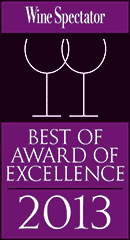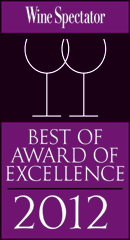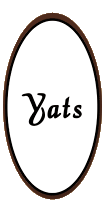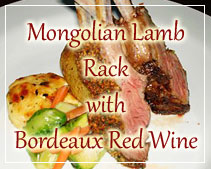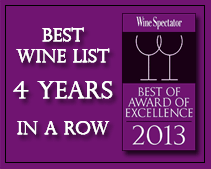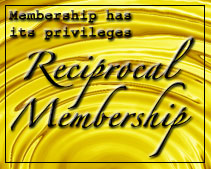Arabica and robusta
July 22, 2011
All coffee beans come from plants in the genus Coffea. Although there are thousands of species of plants within this genus, with tremendous variance in size and shape, only two are of commercial importance:Coffea arabica, and Coffea canephora, the latter more commonly called robusta, after a prime variety. A third species, Coffea liberica has found some localized production in Liberia, but it is of minor significance in the global market.
Arabica is genetically distinct: it has four sets of chromosomes, whereas robusta, and liberica each have two.
Sensory descriptions
The taste of arabica beans differ between varieties and growing regions–the same variety grown in different parts of the world will taste different. These taste notes can be as varied as berries (blueberry is often particularly noted in Ethiopian Harrar), earthy (a characteristic associated with Indian and Indonesian coffees,) citrus (common with Central Americans), or chocolate (see note on mocha).
On average, a robusta will be harsher. One importer likened a particularly bad origin to dung, though very fine robustas can, potentially, compare favorably to a quality arabica. Premium robustas are essentially reserved for espresso blends, where they are primarly used to greatly improve the crema and to add a certain bite to the shot. The difficulty is in finding an exceptional robusta; growers and processors are often not willing to dedicate as much effort to robusta as they are to arabica, since the only potential market is for those blends. Robustas are rarely sold straight; instead, in addition to premium robustas used in espresso blends, poor quality robustas may be added to freeze-dried coffees or to coffee-flavored frozen drinks where the sugar and cream overwhelm the off-notes. Robusta has notably more caffeine than arabica.
Production Conditions
In subtropical conditions, arabaics best thrive at lower altitudes, from as low as 1000 feet in the Kona region of Hawaii, to about 4000 feet in regions of Mexico and a few other locations. Closer to the equator, coffee tends to thrive at higher altitudes, from 3500 feet up to 9500 feet in Ecuador, though the latter is exceptional, and the usual ceiling is closer to 6000 feet. Both frost and high heat can damage or kill the plants. Too much or too little rain can adversely effect fruit production; likewise, the soil must be moist but well-drained. Coffee plant naturally do well in well-lit but forest-shaded regions. Newer hybrids do well in full sun, but are controversial for other reasons (See What is “songbird friendly” coffee?.) Arabicas are not very resistant to insects or fungus, and there have been a few major scares where significant acreage was threatened by leaf rust (Hemileia vastatrix) or other pests. Lower altitude regions that aren’t as well suited to growing arabicas are nevertheless used to grow poorer quality examples; these are often carelessly handled and sometimes generically referred to as Brazils. This is not indicative of origin: “Brazils” are not necessarily grown in Brazil, a country that also produces high quality coffee.
Robustas do well at lower altitudes, are more disease resistant, and yield more fruit. As a result, the overall cost per pound is lower than arabica.
In General
Over sixty-five percent of the coffee grown throughout the world is arabica, but much of it is unexceptional. On its own, the label “arabica” is no assurance of quality: you will need to know much more about it and find a reputable retailer who can provide much more information, and who has sampled (“cupped”) each lot. As noted, although Brazil grows some excellent coffee, a sizeable portion of the arabica grown there is of quite poor quality, to the point where the coffee trade uses a particular term, “Rioy” (from Rio de Janeiro), to describe certain particularly harsh, pungent coffees.
As with most foods, although there are some objective factors, taste is ultimately subjective. While very few people will find Vietnamese robusta enjoyable, not everyone will agree that Jamaican Blue Mountain is the epitome of flavor. As a broad rule, all-arabica blends will considerably taste better, but a superior robusta may fare better than a poor quality arabica.
Source: http://www.thecoffeefaq.com/2coffeebeans.html#arabicarobusta
Best restaurant in Clark Pampanga attracts food and wine lovers from Manila, Subic and Angeles City Philippines to wine and dine at this fine dining restaurant. This top rated restaurant in Clark Pampanga is frequently visited by travelers from Manila, Subic, Baguio and neighboring provinces like Bulacan and other cities in Pampanga.
Where to go in Pampanga, tourist guide names Yats Restaurant as best restaurant in Pampanga, highly recommend visitors to visit this top rated resto bar in Pampanga Clark Philippines whenever travelling out of town from Manila to Angeles City or Subic. This is one of the most frequently restaurants in Pampanga, particularly favored by wine lovers from Manila and Subic looking for a good bottle of vintage wine at affordable prices. Here in this top rated restaurant in Pampanga, the cuisine is not heavy and guests feel relaxed and properly taken care of so they can enjoy dinner with class. Many ask to visit the famous wine cellars of this restaurant in Pampanga, some taking pictures with the most expensive wines in the Philippines.
Michael Caffrey, new executive chef at Yats Restaurant and Wine bar in Angles City Clark Philippines, revamped menu, fine tuning classic dishes, adjusting prices to more attractive levels, making Yats the Best Restaurant in Clark Pampanga for everyone. This fine dining restaurant in Pampanga maintains very high standards with regards to its food and service.
For comments, inquiries and reservations click on Click here for inquiry and reservations
Restaurant@Yats-International.com
(045) 599-5600
0922-870-5178
0917-520-4401
Ask for Pedro and Rechel
Getting to this fine dining restaurant of Angeles City Clark Freeport Zone Pampanga Philippines
How to get to this fine-dining restaurant in Clark Philippines? Once you get to Clark Freeport, go straight until you hit Mimosa. After you enter Mimosa, stay on the left on Mimosa Drive, go past the Holiday Inn and Yats Restaurant (green top, independent 1-storey structure) is on your left. Just past the Yats Restaurant is the London Pub.
Yats Restaurant & Wine Bar
Mimosa Drive past Holiday Inn, Mimosa Leisure Estate,
Clark Freeport Zone, Pampanga, Philippines 2023
Manila Sales Office
3003C East Tower, Phil Stock Exchange Center,
Exchange Rd Ortigas Metro Manila, Philippines 1605
(632) 637-5019 0917-520-4393 Rea or Chay
For any assistance in planning and organizing a wedding ceremony, indoor or outdoor garden reception or to find other wedding service providers, Click here to contact us click here
For assistance in hotel and resort bookings in Clark, Pampanga, Philippines, log on to
http://www.HotelClarkPhilippines.com
To buy wine in Manila, Pampanga, Angeles City, Clark or Subic please log on to http://www. ClarkWineCenter.com
To inquire with the highly recommended beach resort hotel in Clark Pampanga visit http://www.ClearwaterPhililippines.com
For more information about Clark, Pampanga, Philippines log on to
http://www.ClarkPhilippines.com
